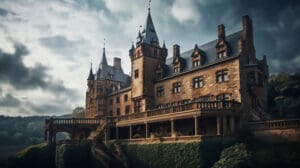Edinburgh: 9 Spots Revealing The Secrets Behind Europe’s Most Haunted City
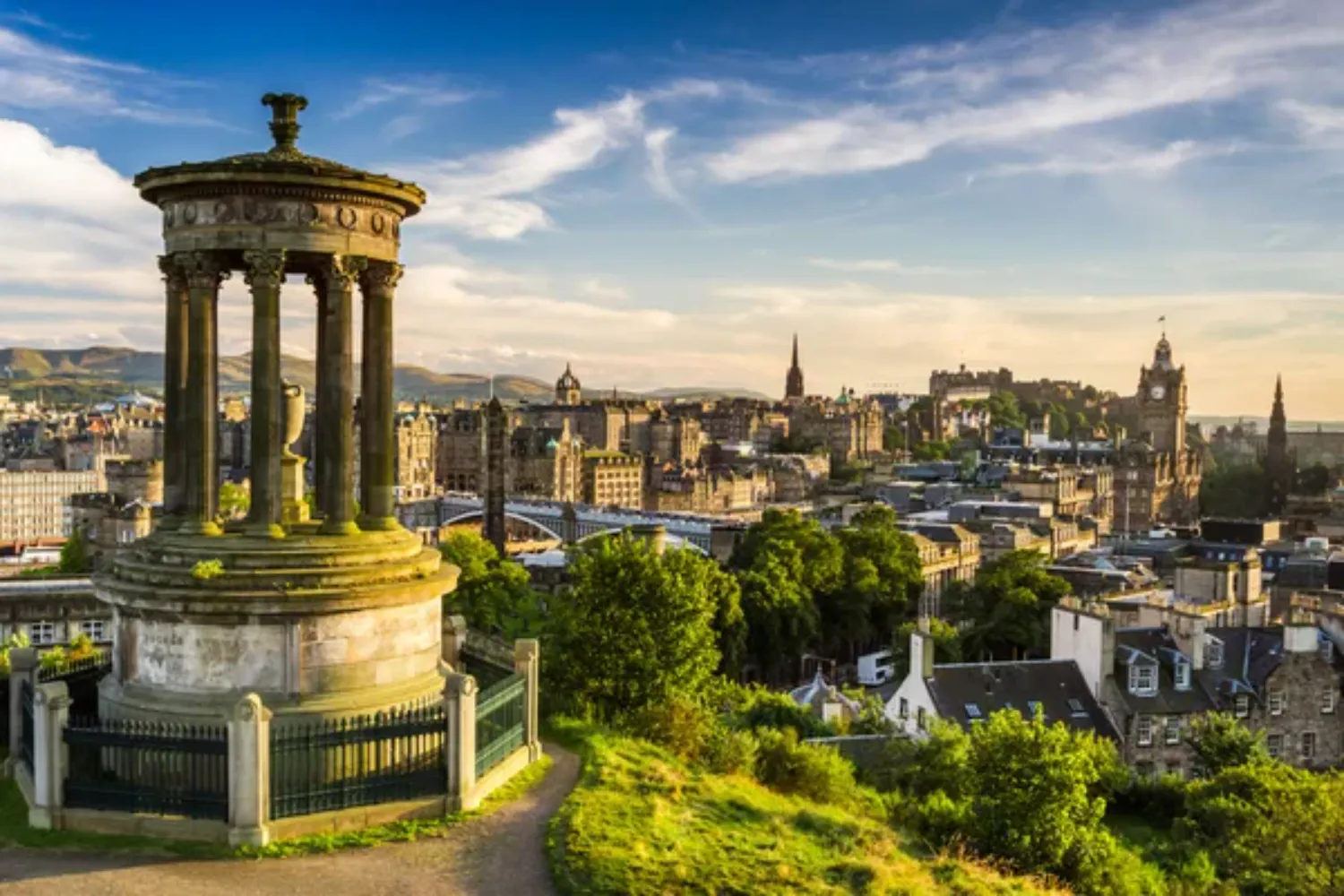
Updated On: November 08, 2023 by Aya Radwan
History seeps through the walls of Edinburgh at every corner. Auld Reekie, as it is known affectionately by many locals, this city hides a dark side. If you look for haunted places in Edinburgh, you’ll be shocked to learn that even its most famous monument, Edinburgh Castle, hides beguiling secrets.
Whether you’re a lover of supernatural phenomena or looking for a spooky tour to add some thrill to your time in Edinburgh, this article has something for you. We’re about to head on an exploration journey of Edinburgh’s most haunted places to ensure you have one unforgettable experience. A fair warning before we begin, though, Edinburgh is considered one of Europe’s most haunted cities.
Edinburgh Castle
Edinburgh Castle dominates the city’s skyline as it stands against time on Castle Rock. The site has been occupied since the Iron Age, while the earliest mention of the castle itself dates to the 12th century. Edinburgh Castle has been the residence of the Scottish Monarchy and the site of countless political sieges, earning it the title of Britain’s most besieged castle. Not many of the castle’s buildings stood against architectural restorations; its oldest standing building is St Margaret’s Chapel, from the 12th century, and the Royal Palace, from the 16th century.
As the residence of the Scottish rulers, Edinburgh Castle played a vital role in many Scottish wars, such as the Wars of the Scottish Independence, the siege to free King James III, the Lang Siege and the Jacobite Rising. Unfortunately, the castle’s role started dwindling in the 15th century and became a military barracks in the 17th century.
Edinburgh Castle’s military history contributed to making it the city’s most haunted monument. Over the years, thousands were imprisoned, tortured and killed within its walls. When you visit the castle today, you might suddenly feel a heavy heart, hear a muffled scream or even sense an inexplicable hand on your shoulder or a tug on your clothes.
The scariest encounters relived by one visitor after another include the faint sound of bagpipes within the castle walls, where the visitors heard the music starting and stopping out of the blue. This bagpiper was a young lad who walked the tunnels beneath the castle as part of an exploration expedition while playing his bagpipe so his team would know where he was. Suddenly, the lad’s playing stopped, and he was never found. The other encounter visitors retold was coming across the little headless drummer roaming the corridors with his drum.
As if these two incidents weren’t freakish enough, other visitors said they witnessed ghosts donned in French military uniform, who were said to be prisoners during the Seven Years’ War. Dr Richard Wiseman conducted an experiment in 2001 to verify the castle’s eerie history, where he gathered 240 volunteers from around the world with no prior knowledge of the castle’s spiritual inhabitants. Although the visitors all reported unusual incidents, Wiseman, a sceptical, admitted it was odd how the incidents took place in the castle’s rooms, said to be the most haunted.
Greyfriars Kirkyard
Greyfriars Kirkyard is a mid-16th-century graveyard that encircles Greyfriars Kirk, a parish church in Edinburgh. The parish derived its name from the former Franciscan friary on site, which was dissolved before Greyfriars Kirk was built. Adjacent to the graveyard is the Covenanters’ Prison, where the government troops imprisoned more than 1,000 protestants after they refused to pledge allegiance to the King. Due to severe maltreatment, most prisoners died and were buried at the graveyard.
Although Greyfriars Kirkyard provides a home for one of the most loyal furry friends history has recorded, it is also home to one of Edinburgh’s scariest murderers. Greyfriars Bobby was a Dandie Dinmont Terrier who slept by his master’s grave for 14 years; the locals’ hearts went out to Bobby and used to feed him, which encouraged him to stay at the graveyard. Bobby died in the last quarter of the 19th century, and to honour his loyalty, the locals made a statue of him by the entrance.
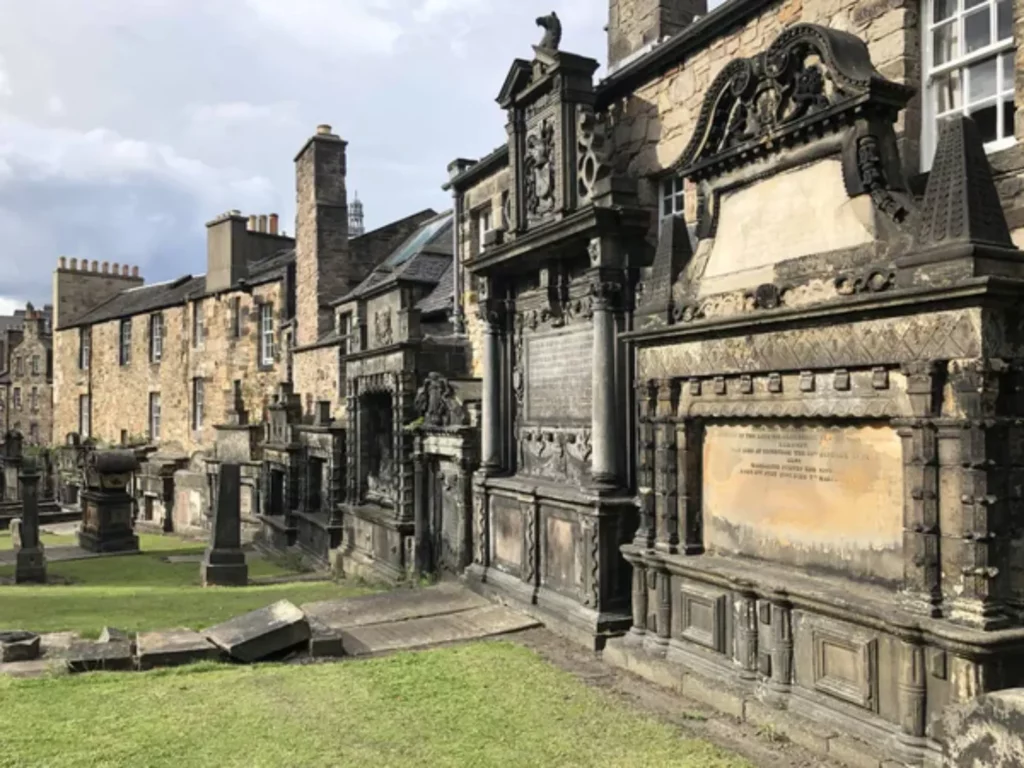
On the other side of the graveyard, a disgruntled spirit lies in its mausoleum. Although Sir George Mackenzie of Rosehaugh was a renowned lawyer and legal writer, this polished reputation was matched by his thirst for blood. Mackenzie had the idea to imprison religious rebels in a field beside Kirkyard, and his policies led to the death of hundreds. Mackenzie’s bloody history includes advocating for burning tens of women alive on charges of witchery.
George Mackenzie and his victims were laid to rest at Greyfriars Kirkyard until a homeless man unintentionally sought shelter beside Mackenzie’s mausoleum. The careless action reportedly awakened Mackenzie’s spirit, which continues to thirst for blood until today. Many visitors to the graveyard report they found inexplicable wounds and scratches on their bodies after leaving the ominous place. Rumour has it that Mackenzie’s soul is responsible for all these incidents.
The Real Mary King’s Close
It’s unimaginable to believe that Mary King’s Close was once a bustling block of intertwined streets in Edinburgh. Mary King was a well-reputed burgess in the 17th century who resided in the old close, and the locals renamed it after her. When the plague hit the city mid-17th century, officials left countless victims untreated and quarantined them inside the close’s borders. Over the years, the close filled with rotten dead bodies, and locals began to see unfamiliar spirits roaming around.
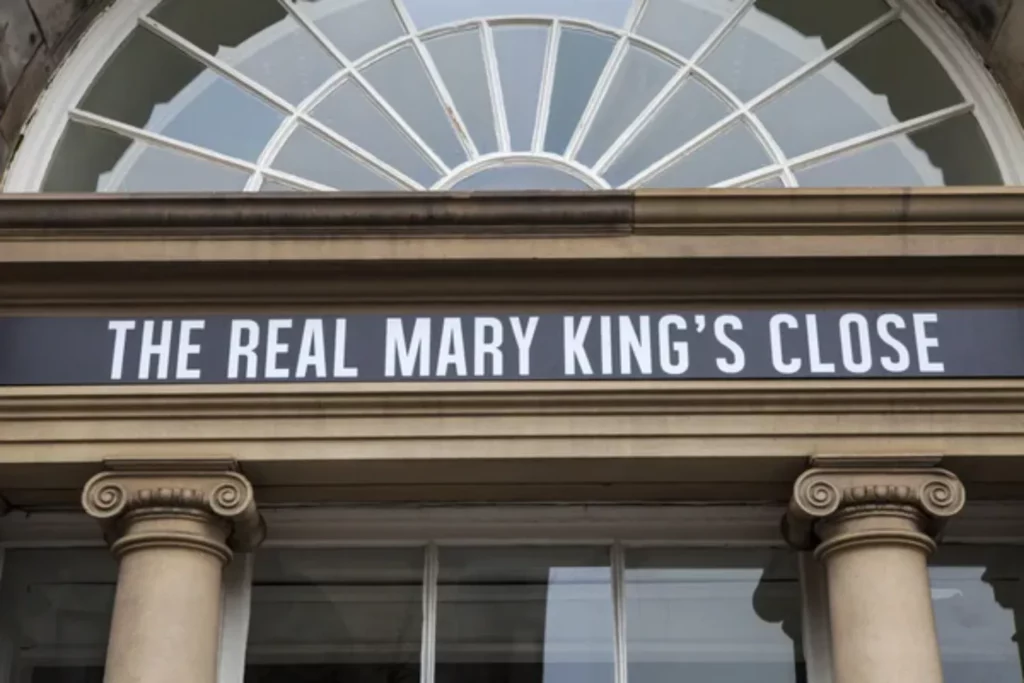
The government decided to demolish the close to the dead bodies as it undertook construction works to build Edinburgh City Chambers, and the close has been locked since then. Mary King’s Close reopened in 2003, with official tours available around the week. Visitors report spotting lost souls and hearing cries of pain during their tours of the close.
The South Bridge Vaults
In the 18th century, the local government in Edinburgh commissioned the construction of two bridges to better connect the city. While the North Bridge connected the Old Town to the New Town, the South Bridge was divided into storage vaults for local business owners. Due to the government’s hastiness, the South Bridge Vaults weren’t adequately isolated from water, and they were consistently overflooded, which ruined the stored goods. Unfortunately, business owners abandoned the vaults in the first quarter of the 19th century, allowing the city’s poorest to seek refuge in the damp and filthy vaults.
The unhealthy living conditions inside the vaults caused the death of many dwellers, especially with the spread of crime, illegal gambling, alcohol and body snatchers storing dead bodies inside. By the 1860s, the vaults were entirely abandoned, and rumours began to spread. It’s alleged that when you visit the vaults, you will hear peculiar sounds, children screaming, and shadows moving from one vault to another.
The Banshee Labyrinth
The Banshee Labyrinth is a rock and metal bar that is partially located in the Southridge Vaults and is allegedly Scotland’s most haunted pub. There are seven rooms in the pub and a cinema that are connected with dim green lights, which gives the place its eeriness. Despite the pub’s spine-chilling paranormal sightings, it transforms into a popular event venue during Edinburgh’s Festival, boasting three performance rooms.
During the 1500s, Lord Nichol Edwards, a merchant who strongly opposed witchcraft, lured tens of women into his house and tortured them in his dungeon. The spirit of one of the murdered women became the banshee haunting “The Banshee Labyrinth”. Originally, a banshee was a wailing spirit that warned the living of near death. Once, some workmen at the pub heard the banshee’s cry and truth be told, one of them received a call moments later about a death in his family. Beware, when you visit the Banshee Labyrinth, there are tales of an invisible force throwing drinks against the wall.
The Royal Mile
The Royal Mile is the series of streets making up Edinburgh’s Old Town, with historical buildings donning each side of the thoroughfare. The majestic Edinburgh Castle stands on one end while Holyroodhouse Palace stands on the opposite end, and the oldest building in the Mile dates back to the 12th century. Holyrood Abbey from the 12th century, the Museum of Edinburgh and the Scottish Parliament Building are just a few of the numerous tourist attractions along the Royal Mile that are worth some of your time.
Countless dark secrets hide among the Royal Mile’s streets. Several savage murders occurred there, such as the murder of George Lockhart, Lord Carnwath, a local advocate, in the 17th century and the controversial murders of Christine Eadie and Helen Scott in the 20th century. In the 17th century, King James VI was also obsessed with witchcraft, so he ordered the execution of any woman interested in science or even exhibiting mental illness. Locals were forced to watch as many as 500 women dragged and burned at stake in the old market area of the Royal Mile.
The Witchery by The Castle
Not far from Edinburgh Castle on the Royal Mile stands The Witchery, a 20th-century restaurant and bed & breakfast. Chef James Thompson opened the restaurant in 1979 with only three more people working with him. Today, the place is a buzzing local attraction with more than 70 employees. Due to its proximity to the location where witches and wizards were burned during the 16th and 17th centuries, the ghost of one of the witches haunts the restaurant today.
The White Hart Inn
The White Hart Inn is a pub in Edinburgh’s former execution spot, the Grassmarket. Most of the pub dates back to the 18th century, but its oldest part, the wine cellar, dates back two centuries earlier, to the first quarter of the 16th century. Due to the pub’s vantage point of the execution gibbet, locals and visitors gathered to drink, watch and gossip about the horrendous incidents. Today, however, this haunted pub combines the old with the new, where elements of good traditional and heart-filling dishes meet with gluten-free and vegetarian dishes.
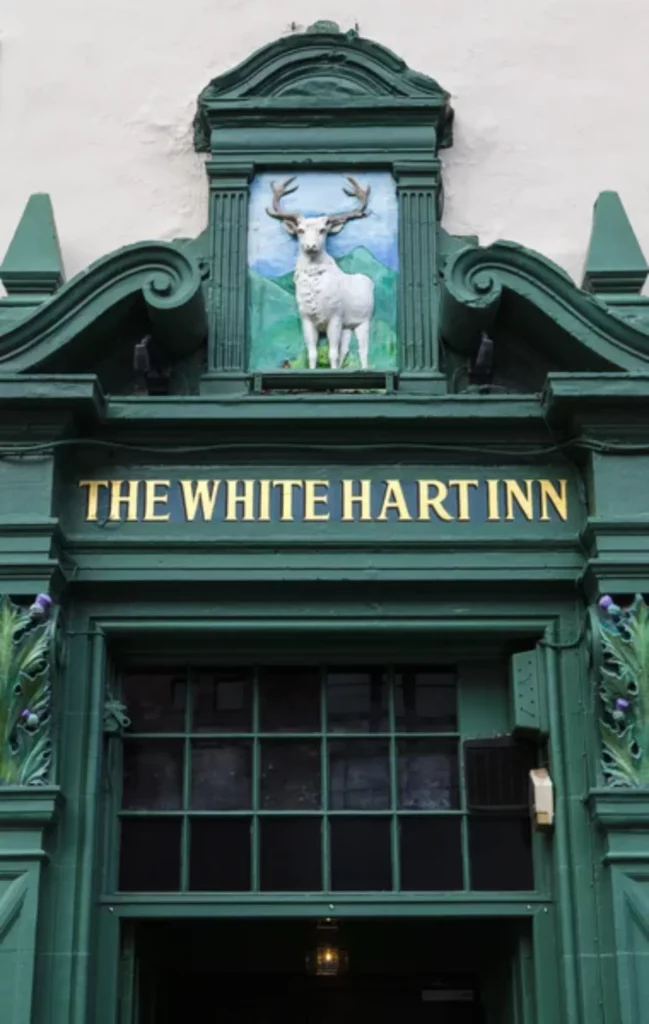
Despite frightening sightings at The White Hart Inn, its reputation as a sinister location was only verified recently in 2005. Local researchers documented visitors stating they got their hair pulled out of the blue, lights switched on and off, sudden door slamming, and condiment jars and plates thrown from one side to another. Visitors described a friendly female ghost that sits at the main bar. Even though the ghost herself said she died outside the pub, she found a home in the haunted tavern.
The Grassmarket
The Grassmarket was one of Ediburgh’s leading marketplaces, where the earliest mention of the place dates to the 14th century. Initially, the market was divided into two parts, the Horse Market and the Grass Market. Besides horses and cattle, the market offered various goods, from flax to oil to iron and even drugs. The Grassmarket today stands in Edinburgh’s Old Town among a colourful painting of shops, pubs and hotels from the 17th century to the 21st century, with Edinburgh Castle standing tall in the back scene.
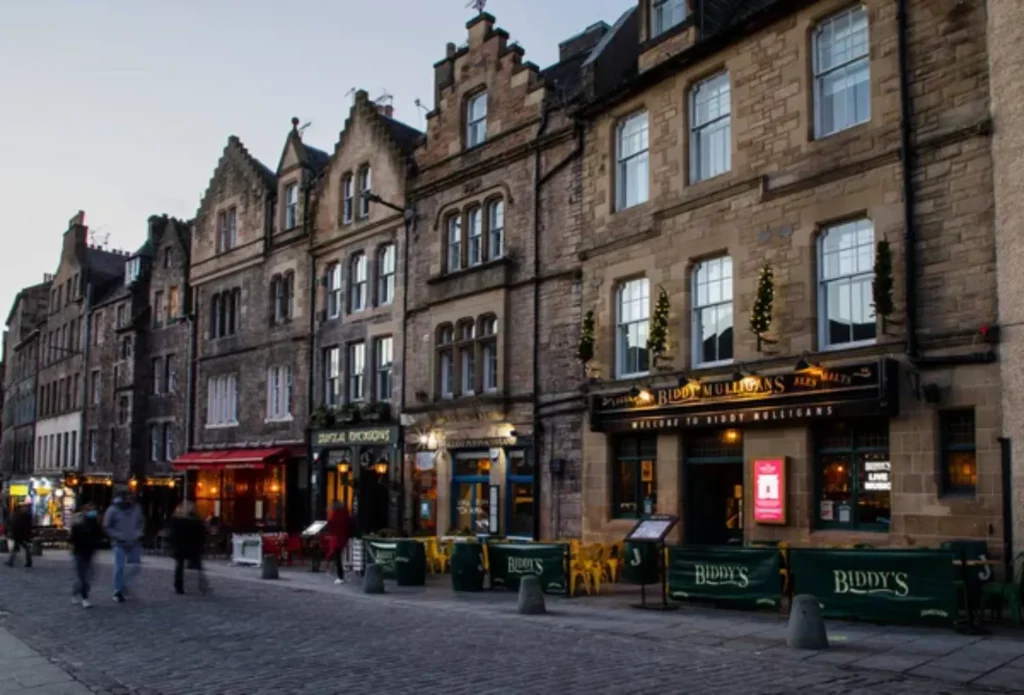
Edinburgh’s Grassmarket had a notorious reputation for inhumane lodging conditions. Reports during the mid-19th century showed that as many as 12 people stayed in a small double bedroom without access to bathroom facilities. The gallows, once installed at the market, took the lives of more than 100 Covenanters in the second half of the 17th century. Perhaps the most brutal act was earmarking, where locals pinned a thief’s ear to a wooden pole. If the thief wished to break free, they’d have to rip their ear off the pole and become forever branded for what they committed.
The unexplained resurrection of Maggie Dickson is the market’s most bizarre incident. Maggie was pregnant in the first quarter of the 18th century, accused of killing her newborn, and sentenced to death. Despite Maggie’s plea of innocence, local authorities hanged her and left her body dangling for 30 minutes before taking her down. When her body was transferred later that day, Maggie rose from the dead and was well enough to return home. Maggie’s spirit reportedly still haunts her execution spot.
We experienced a cold shiver as we explored these haunted places around Edinburgh. The surprising part is that we feel this city still hides more secrets that we have yet to uncover.






